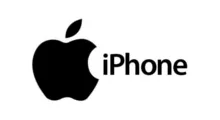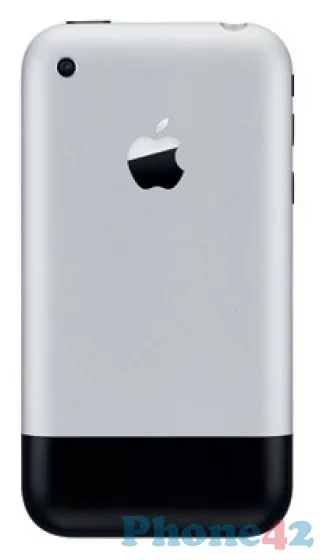
Apple iPhone: Pros and Cons
Apple announced the launch of the iPhone smartphone in 2007. The manufacturer is offering this smartphone with 3.5 inch TFT display, Samsung S5L8900 SoC, and 128 MB of RAM. The iPhone comes with iOS pre-installed. This phone uses a 3.5 inch TFT display. This phone has only one rear-camera (2 MP, 1600 x 1200 px) on its back for photos and videos.
Table of Contents
- Apple iPhone specifications
- Weight, dimensions, colors
- System, chipset, performance
- Display type, size, resolution
- Memory, storage
- Cameras, flash
- Connectivity, network, wireless
- Battery type, capacity, charger
- Features, sensors, specials
- Verdict, pros and cons
This article shares our personal experiences and thoughts about using the Apple iPhone smartphone. We hope to offer helpful insights to others interested in this device. The specifications below are from the official manufacturer data, but we also consider user reviews. If you've seen any mistakes or things missing in these specifications, please let us know.

Apple iPhone specifications
| Brand | Apple |
|---|---|
| Name | iPhone |
| Model | IP1 |
| Release date | 2007 |
Weight, dimensions, colors
| Weight | 4.76 oz |
|---|---|
| Dimensions | 4.53 x 2.4 x 0.46 inch |
| Colors | black |
| SIM type | Mini SIM |
The weight of the Apple iPhone is still considered to be lightweight and portable.
System, chipset, performance
| OS version | iOS |
|---|---|
| SoC | Samsung S5L8900 |
| CPU | 412 MHz ARM 11 |
| GPU | PowerVR MBX |
The Apple iPhone comes with iOS out of the box. iOS includes a range of proprietary features and apps, such as Siri, FaceTime, and iMessage. This CPU can be fast enough for basic phone operations. Many consider PowerVR GPUs to highly compete with other leading mobile GPUs.

Display type, size, resolution
| Display type | TFT |
|---|---|
| Screen size | 3.5 inch |
| Resolution | 320 x 480 px |
| Multitouch support | yes |
This 3.5 inch smartphone comes with a TFT display. Smaller smartphones are generally more compact and easier to handle. The display size is the diagonal distance from one corner of the screen to the opposite corner.
Memory, storage
| RAM | 128 MB |
|---|---|
| Internal storage | 4 GB |
| Memory card slot | no |
128 MB of RAM is not typically considered to be enough for a smartphone. More RAM lets you keep more apps and processes open in the background. This keeps the device from slowing down. If you use your smartphone for basic tasks like calling, texting, and browsing the web, 32GB may be sufficient for your needs. The internal storage of the Apple iPhone (128 MB) cannot be expanded.

Cameras, flash
| Main camera | 2 MP, 1600 x 1200 px |
|---|---|
| Flash | no |
| Selfie camera | no |
You may have budget limits. Or, you may prioritize other features over a multi-camera system. If so, this single camera setup can be a good choice. The main camera of iPhone smartphone does not have OIS. The optical image stabilization (OIS) is an important feature in smartphones.
Connectivity, network, wireless
| GSM 2G bands | 850 / 900 / 1800 / 1900 |
|---|---|
| Network coverage | 2G |
| Wi-Fi | Wi-Fi 802.11 b/g |
| Bluetooth | v2.0 |
| GPS | no |
| NFC | no |
| FM radio | no |
| USB | 30-pin dock connector |
| Headphone | 3.5 mm jack |
The iPhone supports the latest Wi-Fi standards. You can use Bluetooth to connect your iPhone smartphone to many Bluetooth devices. This phone doesn't have built-in GPS. The phone isn't NFC (Near Field Communication) capable. NFC is not essential for basic phone functionality, but it can be useful. The 3.5 mm headphone jack allows you to connect wired headphones or earphones to the device.
Battery type, capacity, charger
| Type | Li-Ion 1400 mAh, non-removable |
|---|
The Li-Ion 1400 mAh, non-removable battery gives the smartphone a good battery backup. The Li-ion is a low maintenance battery. It does not need periodic full discharge. The iPhone does not have a removable battery, it integrates the battery into the phone's design.
Features, sensors, specials
| Sensors | accelerometer, proximity |
|---|
Today, smartphones come with many sensors. They help make the user experience better. The accelerometer is a sensor. It measures the tilting motion and orientation of the phone.
Verdict, pros and cons
Every phone has its strengths and weaknesses, and this Apple phone is no exception. As with any device, there are aspects that shine and others that fall short. By examining both sides, we can paint a complete picture of what this phone has to offer. Let's explore its standout features and areas for improvement. Remember, this is just my opinion, and yours might be different.
Pros
- none
Cons
- TFT display
- limited-size screen
- insufficient memory
- insufficient internal storage
- non-expandable storage
- single camera setup
- no OIS function
- lack of autofocus
- no 4G support
- no 5G support
- no GPS receiver
- no NFC feature
- low-capacity battery
- no digital compass
- no fingerprint reader
Please let us know if you find incorrect information or something isn't working. Also, tell us if you have a suggestion for improvement.
 I'm Lucas Bradley, the founder of the Phone42.com site. I love technology, especially smartphones, and I've been working with tech stuff for more than 20 years. This means I've seen a lot of changes and have learned a bunch about what makes a good phone. On Phone42.com, I look at all kinds of phones. They can be from big, well-known companies or new ones trying to make their mark. I want to help people understand what's new and cool in the world of smartphones, in a way that's easy to get.
I'm Lucas Bradley, the founder of the Phone42.com site. I love technology, especially smartphones, and I've been working with tech stuff for more than 20 years. This means I've seen a lot of changes and have learned a bunch about what makes a good phone. On Phone42.com, I look at all kinds of phones. They can be from big, well-known companies or new ones trying to make their mark. I want to help people understand what's new and cool in the world of smartphones, in a way that's easy to get.